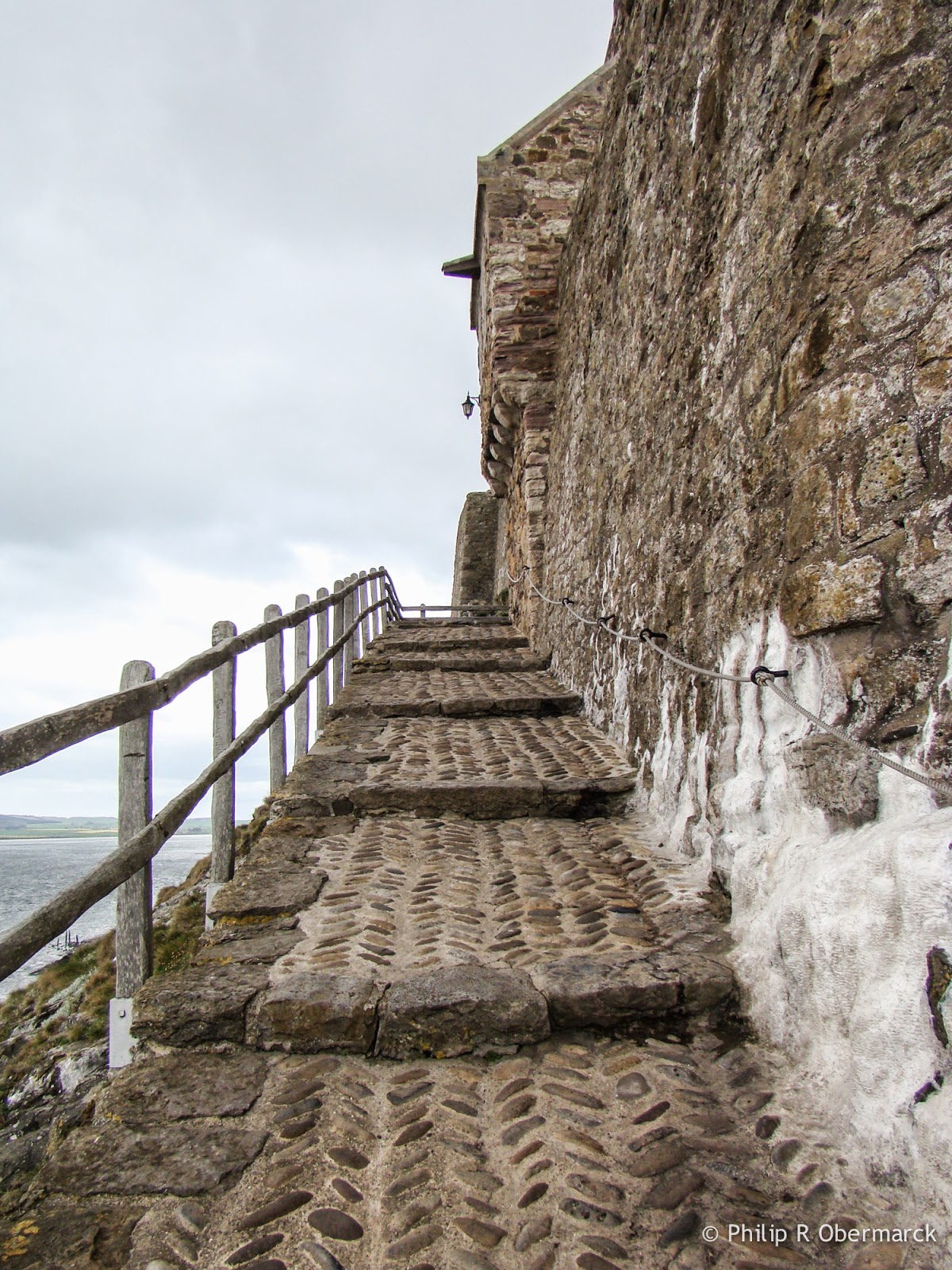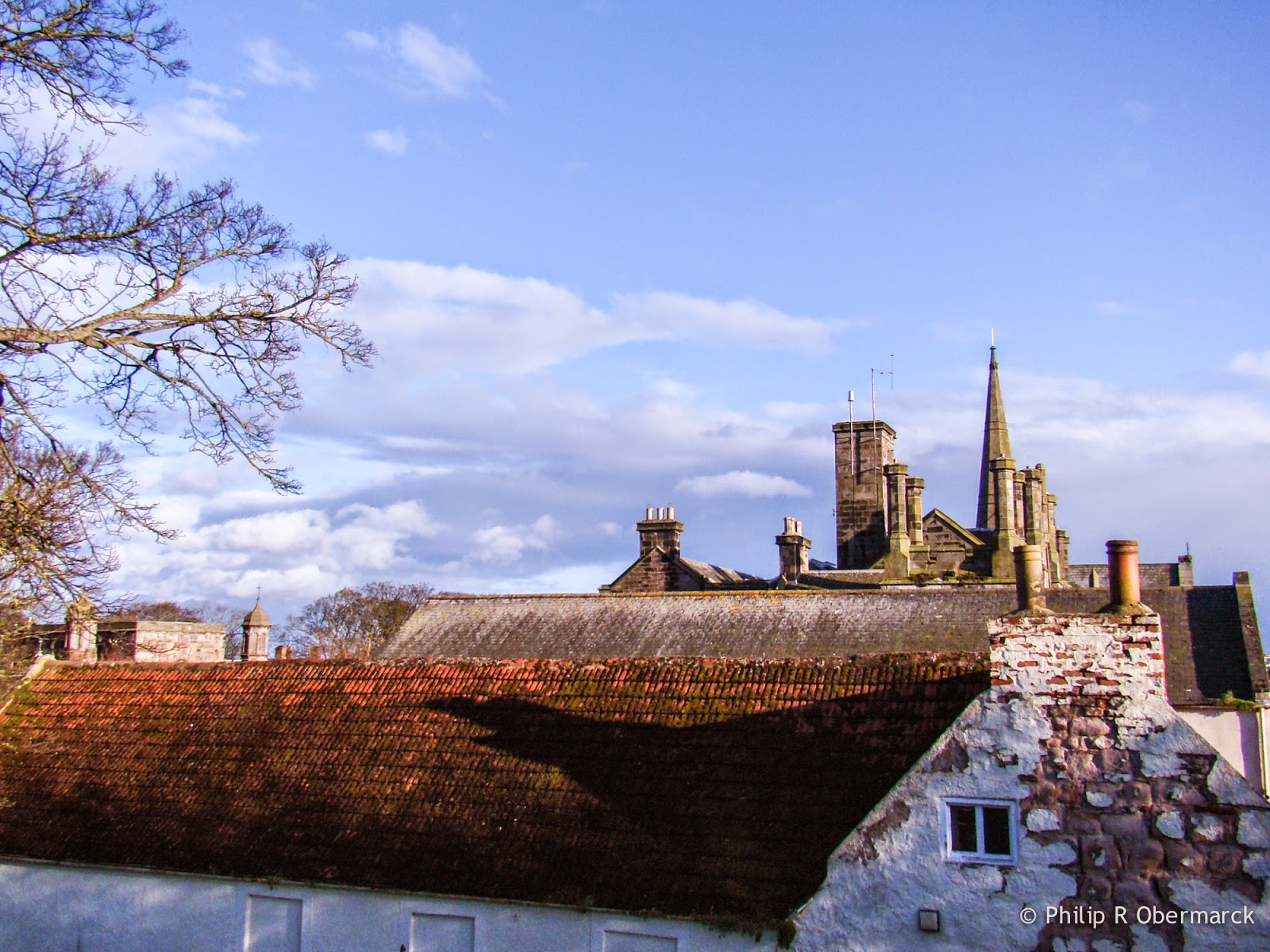In mid-April, we visited the
Holy Island of Lindisfarne and
Berwick upon Tweed, the closest rail connection. Lindisfarne is the location of
Lindisfarne Priory, the remains of a 12th century abbey which probably stands on the original site of St. Aidan's monastery, built in the 7th century. Across the island stands
Lindisfarne Castle, a misnomer in my opinion. The castle is a former 15th century fort which was heavily renovated and reconstructed in 1901 by Sir Edward Lutyns to fit his ideal of a castle-home. Not what I would consider a castle in the historical sense, but still interesting to visit.
I don't want to spend pages describing history or our trip, but I do feel like I should mention some things so you won't be caught unawares. First, make certain the bus is running from Berwick upon Tweed to Holy Island. It only runs a couple of days a week, so if you don't have a car the only alternative is a taxi, or a bus ride to Beal and a long, damp walk across the causeway. The island is cut off from the mainland during high tides, so check the
tide tables when you're coming. You
cannot cross the causeway between the mainland and the island when the tide is high. The island is geared towards the tourist trade, and even in the early spring there were a lot of tourists. The
Window on the Wild, part of the
Lindisfarne National Nature Reserve halfway between the Castle and the Priory, is the only free attraction we found on the island. It is worth stopping by during your walk from the castle to the priory, or vice versa, and by all means drop a donation in their box.
Berwick upon Tweed is the northernmost town in England and has changed hands a few times during it's long history. During Elizabeth I's reign, fortifications were built that were designed to both withstand artillery of the day and facilitate its use for defence. These are the only walls of their type still in existence in England.
And now, the photos:
 |
| Church in Berwick upon Tweed |
 |
| The railway station |
 |
| Ruins of Lindisfarne Priory |
 |
| Lindisfarne Castle from the Priory |
 |
| Lindisfarne Castle |
 |
| Seals sunning themselves on the sand...Yes, that black line is seals |
 |
| The interior of the Castle, the kitchen |
 |
| The water heater |
 |
| Above the fireplace is a map of the coast with a wind indicator |
 |
| A view of the island from the castle's deck |
 |
| The priory from the castle |
 |
| Rocks and Lichen |
 |
| Sheep! |
 |
| And Lambs! |
 |
| Some of the local birdlife |
 |
| Part of a cross in the Priory Museum |
 |
| The Parish Church of St Mary the Virgin, next to the Priory |
 |
| The castle as seen from the priory |
 |
| Panorama shot of the ruins of Lindisfarne Priory |
 |
| Statue of St Cuthbert |
 |
The Journey by Fenwick Lawson. Commemorates the journey of
St. Cuthbert's coffin when it was taken from Lindisfarne in 875 to escape Viking raids. |
 |
| Berwick upon Tweed |
 |
| Example of the Elizabethan fortifications |
 |
| Fortifications in Berwick upon Tweed |
 |
| One of a pair of lions, referred to by artist L.S. Lowry as the pot lions, part of the Lowry Trail in Berwick |
 |
| Lighthouse at the entrance to the river Tweed |
 |
| Abandoned house....haunted? Perhaps. |
 |
The Berwick Bridge or the Old Bridge, spans the River Tweed,,
built in the early 1600s. |
 |
The Royal Tweed Bridge (fore) and the Royal Border Bridge (back).
The Tweed Bridge was built in the 1920's for automobile traffic. |
 |
| The Royal Border Bridge, a railway viaduct built in the 1940s. |






































































